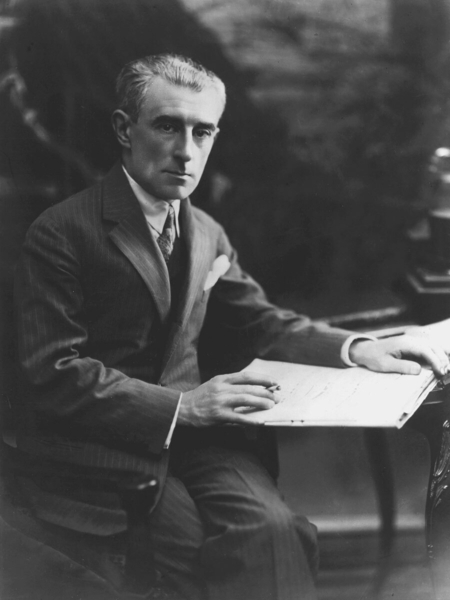Maurice Ravel (1875–1937)
Ravel ist ein Meister der Klangfarben und Harmonik. Etliche seiner Werke zeugen von seiner Liebe zur spanischen Musik, nicht nur der „Boléro“ sondern auch die „Rapsodie espagnole“.
Ravel und sein „Boléro“ werden häufig in einem Atemzug genannt – es ist sein bekanntestes und am häufigsten gespieltes Werk. Ursprünglich als Ballett1928 mit der Tänzerin Ida Rubenstein uraufgeführt, erlangte das Werk rasch Weltruhm, während Ravel sich dazu ironisch äußerte: „Mein Meisterwerk? Der Boléro natürlich. Schade nur, dass er überhaupt keine Musik enthält.“
Die Resonanz auf andere Werke fiel zu Lebzeiten unterschiedlich aus. Ungewohnte Harmonik und Rhythmik eckten an und faszinierten zugleich. Ursprünglich hatte Ravel wollte Pianist werden. Mit 13 Jahren erhielt er Klavierunterricht bei Émile Descombes, einem Chopin-Schüler. Danach studierte er am Pariser Konservatorium und entschied sich erst 1897 für ein Kompositionsstudium bei Gabriel Fauré.
Ravel ist ein Meister der Klangfarben und Harmonik. Etliche seiner Werke zeugen von seiner Liebe zur spanischen Musik, nicht nur der „Boléro“ sondern auch die „Rapsodie espagnole“. Durch seine Mutter, die selbst Baskin war, fühlte er sich dem Land seit frühester Kindheit verbunden. Ravel notierte seine Kompositionen mit großer Sorgfalt. Auch seine Orchestrierungen wie Mussorgskijs „Bilder einer Ausstellung“ bestechen durch ein unglaubliches Feingefühl für Klangschattierungen.
Der renommierte Ravel-Experte und Dirigent Jean-François Monnard zeichnet bei den Breitkopf-Urtext-Ausgaben für die Qualität der Partituren und der Aufführungsmateriale verantwortlich.









